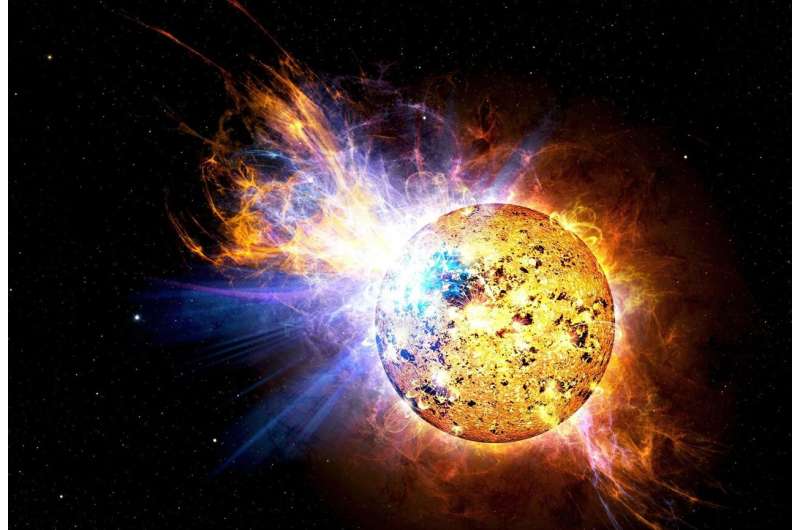August 30, 2021 report
Computer scientist warns global internet is not prepared for a large solar storm

Sangeetha Abdu Jyothi, a computer scientist at the University of California, Irvine, presented her findings last week at the SIGCOMM 2021 data communication conference regarding her concerns about vulnerability in the global internet communication structure. She believes that a major coronal mass ejection could wreak havoc on international internet communications due to vulnerabilities in the repeaters used on undersea cables. She pointed out that the world has not seen such an event since 1859, well before modern power grids and large-scale internet connections.
A major coronal mass ejection directed at Earth would send massive amounts of magnetized solar particles our way. These would likely create problems for power grids around the world; the 1859 event disrupted the still blossoming global telegraph network. Power producers are well aware of such risks and most are taking steps to deal with such an event. But the same cannot be said for the global internet. While it is true that fiber optic cables are used for major traffic lines, there remains a problem with the repeaters that are used to bolster signals over long distances. On land, Jyothi noted, there is not much of a problem because such cables rarely run long enough to need repeaters. But on the seafloor, repeaters are placed every 50 to 150 meters—the distance depends on conditions. The repeaters, she noted, would very likely be damaged during a major solar storm, cutting off international internet communications until workers could replace them. And that could take weeks for some, and possibly months for others.
Jyothi also pointed out that undersea cables have not always been grounded well, and sometimes are not grounded over very large intervals. This, she stated, puts the repeaters at great risk of damage from solar storms. She also noted that some parts of the seafloor are not very good at grounding, with some areas much more effective than others. A major coronal mass ejection could also destroy electronics aboard satellites used for both GPS and internet traffic. She concluded that current estimates of such a storm occurring sometime over the next decade range from 1.6 to 12%.
More information: Solar Superstorms: Planning for an Internet Apocalypse (PDF), www.ics.uci.edu/~sabdujyo/papers/sigcomm21-cme.pdf
© 2021 Science X Network



















